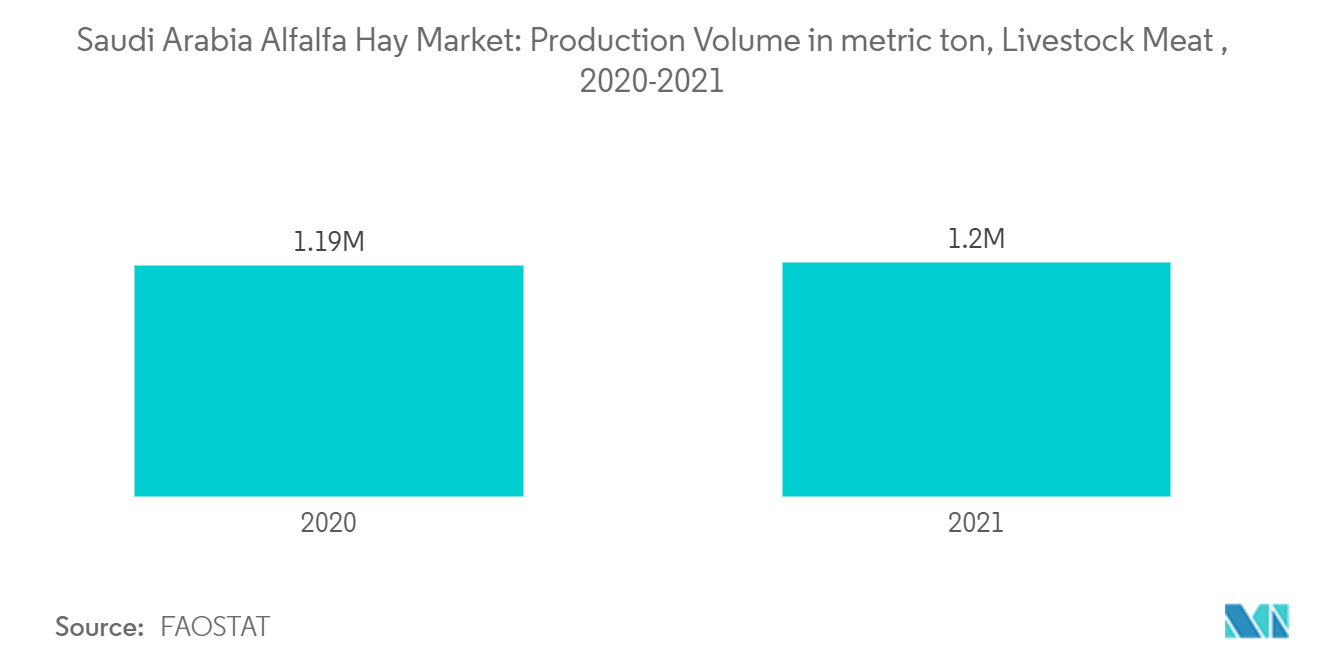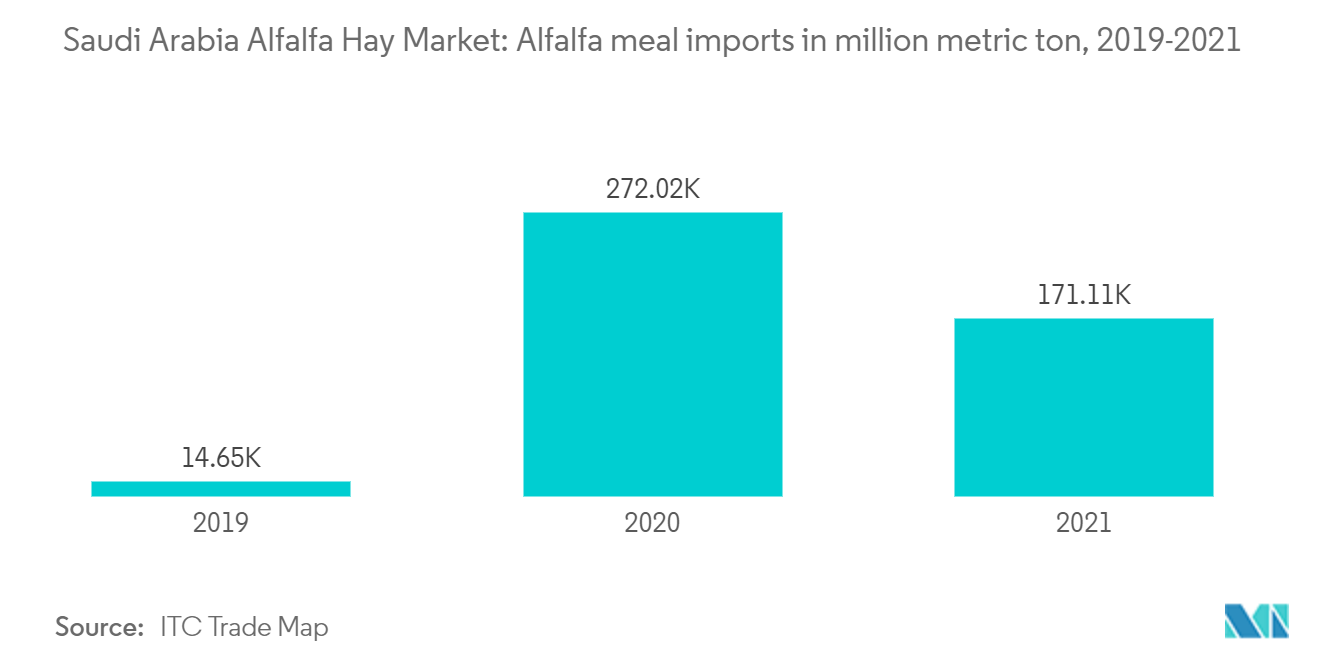Market Trends of Saudi Arabia Alfalfa Industry
This section covers the major market trends shaping the Saudi Arabia Alfalfa Market according to our research experts:
Rising Demand for Quality Hay for Livestock and Dairy Production
- Livestock is a major factor responsible for the growth of the Saudi Arabian alfalfa market. Livestock products remain the desired food for nutritional value and taste across major parts of Saudi Arabia. Saudi farmers heavily rely on imported alfalfa hay to increase meat and dairy production. According to the Food and Agriculture Organization Corporate Statistical (FAOSTAT), the country's livestock population has risen over the past few years. The number of cattle and buffalo stocks was 700,000 heads in 2021, up from 567,040 in 2019.
- Additionally, the rising demand has witnessed a significant increase in meat production. In 2021, poultry meat led the production with 910,446 metric tons, up from 800.570 metric tons in 2029, it is followed by sheep and goat meat at 143,438 metric tons. Beef and buffalo meat production stood at 40,000 metric tons in 2021.
- Furthermore, according to the Ministry of Environment, Water, and Agriculture (MEWA), the Kingdom's domestic production reached a 60% self-sufficiency level in 2020. There are plans to collaborate with the private sector to increase that level to more than 85 percent by 2030. The government has also been actively working to remove obstacles for producers to acquire and use the land for poultry production, provide loans for equipment purchases, and reform its subsidy system for feed, livestock, and poultry. This is anticipated to increase poultry production, eventually creating demand for alfalfa hay.

Ban on Forage Crop Cultivation in Saudi Arabia (leading increased imports)
- In 2016, Saudi Arabia began a three-year plan to phase out domestic green forage production to reduce water consumption. Total forage production is currently estimated at 4 million metric tons per year. The country is hence dependent on imports to meet its green fodder demand. The United States is the primary exporter of alfalfa hay. However, Saudi dairies are attempting to procure from alternative sources like Argentina and Sudan.
- In 2018, the Government reintroduced support for wheat production to provide forage producers with an alternative, less water-intensive crop than alfalfa, the main green fodder crop. However, despite the high procurement price of wheat by the Saudi Grains Organization (SAGO), at USD 304 per metric ton in 2020, many farmers still prefer to produce high-protein alfalfa as its income per hectare is higher.
- Hence, Saudi Arabia's decision to phase out forage production will likely increase the demand for imported high-protein alfalfa hay in the near future. For instance, the imports of alfalfa have increased significantly in recent years. In 2021, the total import value for alfalfa meals accounted for around USD 65.5 million, which increased from USD 31.3 million in 2018.

